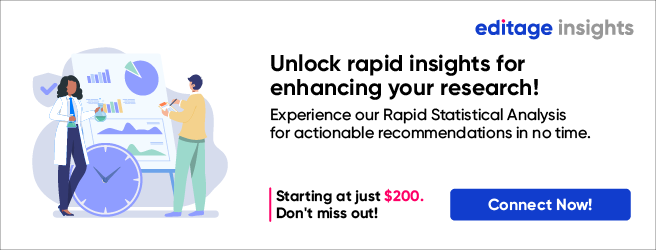Calculating and reporting incidence and prevalence: Tips for biomedical researchers

In biomedical research, especially epidemiology, calculating incidence and prevalence is an important part of statistical analysis. They are both measures of disease frequency but differ in their focus and interpretation. Incidence refers to how many new cases of a disease occur over a given period of time, while prevalence indicates how many people in a population have the disease at a given point in time.
Benefits of calculating incidence and prevalence
Biomedical researchers calculate incidence and prevalence for several reasons:
1. To understand the burden of a disease: Incidence and prevalence are important measures of disease burden. By calculating incidence and prevalence, researchers can understand the overall burden of a disease and how it is changing over time.
2. To identify risk factors: By calculating incidence and prevalence, researchers can identify risk factors for a disease. For example, if the incidence of a disease is higher in a certain population, researchers can investigate genetic or environmental factors might be contributing to that higher incidence, thereby uncovering risk factors for the disease.
3. To monitor disease trends: By tracking incidence and prevalence over time, researchers can monitor trends and identify changes in disease patterns. Their findings can help public health officials develop appropriate disease prevention and control measures.
4. To evaluate interventions: Incidence and prevalence can be used to evaluate the effectiveness of interventions, especially community-wide or large-scale interventions, aimed at preventing or treating a disease. One such example could be including iron-rich foods in a nationwide school lunch program to combat iron-deficiency anemia in children. By comparing incidence and prevalence of iron-deficiency anemia before and after this intervention, researchers can assess whether the intervention is having an impact on the disease.
Best practices in calculating and reporting incidence and prevalence
Because incidence and prevalence data can have a wide-ranging impact on public health policy, it is important that such data are rigorously analyzed and tested. Below are some best practices you can follow when calculating incidence and prevalence in your own research:
1. Clearly define the population being studied: It is important to provide a comprehensive description of the population being studied, including relevant demographics, such as age and sex. This helps to ensure that the reported incidence and prevalence are representative.
2. Report the time period: The time period over which the incidence or prevalence is being reported should be clearly stated. This helps to ensure that the reported incidence and prevalence are accurate and comparable across studies.
3. Use appropriate denominators: The denominator used in calculating the incidence or prevalence should be appropriate for the population being studied. For example, if the study population is defined by age, the denominator used in calculating the incidence or prevalence should be the total population of that age group.
4. Use appropriate units: Incidence and prevalence should be reported using appropriate units, such as cases per 100,000 people. This helps to ensure that the reported incidence and prevalence can be compared across studies.
5. Report any relevant subgroups: If there are relevant subgroups within the population being studied, such as gender or race, incidence and prevalence should be reported separately for each subgroup. This helps to ensure that the reported incidence and prevalence are representative of each subgroup.
6. Report confidence intervals: Reporting confidence intervals helps to give a sense of the precision of the reported incidence or prevalence. Confidence intervals also help readers to interpret the statistical significance of the reported incidence or prevalence.
Do you want to generate robust and high-quality evidence that can improve public health and well-being? Get expert advice from a biostatistician at each stage of your research, through Editage’s Statistical Analysis & Review Services.










